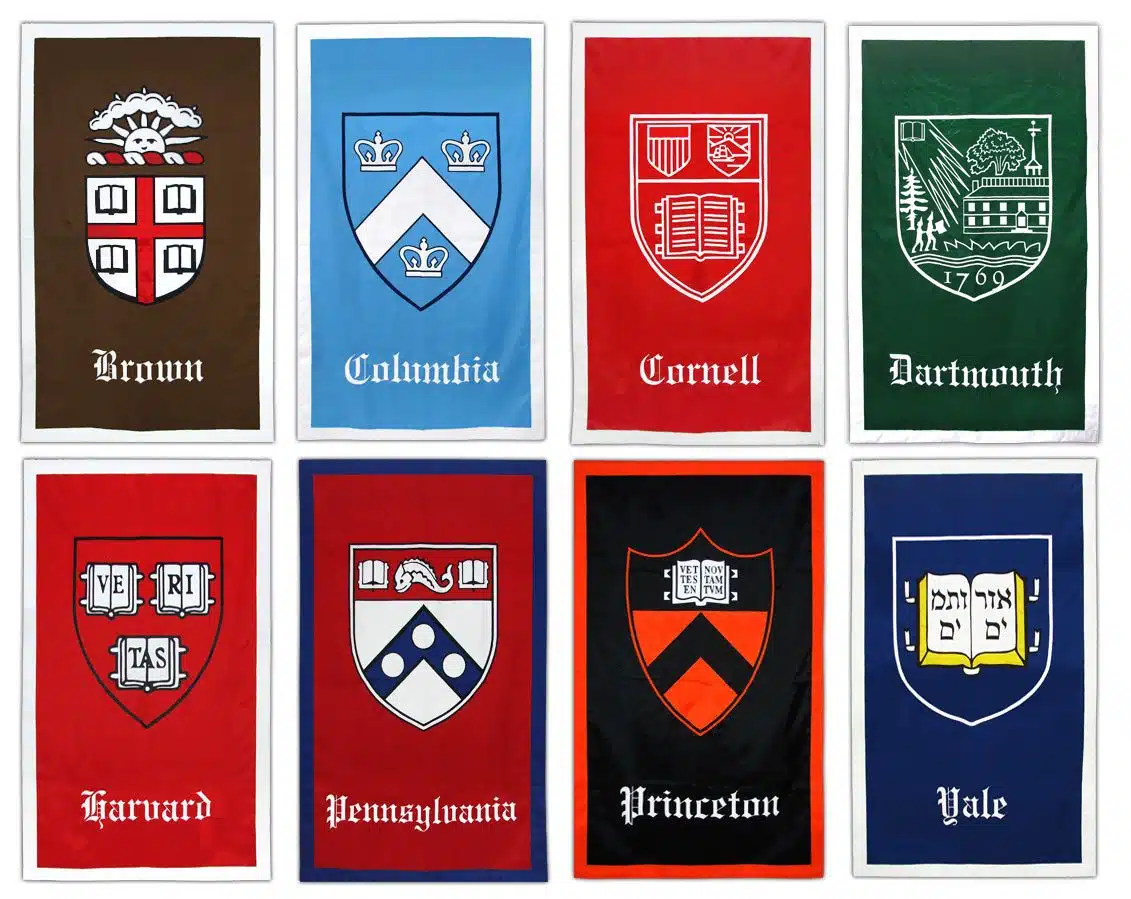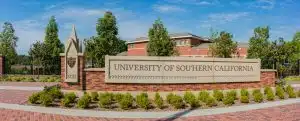Are you one of the many who think the Ivy League schools are always ranked in a fixed order? Known as one of the best institutions in America and the world, the Ivy League has inspired countless students to chase their dreams for the prestige that comes with attending one of these schools.
What really are the Ivy League rankings? How are these schools ranked, and by whom? Which is the best Ivy League school? Most importantly, what are your chances of getting in? Whether you’re focused on rankings or not, the answers depend on you. Ivy League school rankings consider various factors such as academic reputation, future career prospects, and quality of life. Ultimately, like any other list, it’s about finding what works best for you.
List of Ivy League Schools (in alphabetical order)
- Brown University
- Columbia University
- Cornell University
- Dartmouth College
- Harvard University
- Princeton University
- University of Pennsylvania
- Yale University
Ivy League Rankings
| Ivy League Schools | Forbes Ranking | Niche Ranking | U.S. News Ranking | Wall Street Journal Ranking | Average Ranking |
| Princeton | 1 | 3 | 1 (1) | 2 | 1.75 |
| Yale | 2 | 1 | 3 (5) | 3 | 2.25 |
| Harvard | 5 | 2 | 2 (3) | 1 | 2.5 |
| Penn | 4 | 5 | 4 (6) | 4 | 4.25 |
| Brown | 7 | 7 | 5 (9) | 7 | 6.5 |
| Dartmouth | 8 | 6 | 8 (18) | 8 | 7.5 |
| Columbia | 3 | 4 | 6 (12) | 5 | 4.5 |
| Cornell | 6 | 8 | 7 (12) | 6 | 6.75 |
U.S. News categorizes colleges into four groups for its ranking lists: National Universities, National Liberal Arts Colleges, Regional Universities, and Regional Colleges. All Ivy League schools fall under the National Universities category, meaning their rankings are compared with other colleges within that same category.

How Are Ivy League Schools Ranked?
Ivy League schools are ranked by several organizations, each with its own criteria and focus. There isn’t a single, universally accepted list of rankings because each school has unique strengths. The four most widely cited rankings are from Forbes, Niche, U.S. News & World Report, and the Wall Street Journal/Times Higher Education.
Each of these rankings emphasizes different factors:
- Forbes: This ranking places a heavy emphasis on financial outcomes, such as the career earnings of graduates.
- U.S. News & World Report: This list focuses significantly on academic standings, evaluating the quality of education and the reputation of the institutions.
- Niche: This source often considers student reviews and experiences, a perspective on campus life, and overall satisfaction.
- Wall Street Journal/Times Higher Education: This ranking looks at a variety of factors, including both academic and financial outcomes.
These different emphases mean that the order of Ivy League schools can vary from one list to another. By considering multiple rankings, one can get a well-rounded understanding of how these prestigious institutions compare. It’s also essential to remember that the scope and criteria of these rankings differ, influencing the results accordingly.
Ivy League Rankings Methodologies: An In-Depth Look
When it comes to ranking Ivy League schools, various organizations use different methodologies, each with its own set of criteria. Here’s a breakdown of how some of the most prominent ranking bodies evaluate these prestigious institutions:
Forbes
Forbes focuses heavily on financial outcomes and returns on investment. Their ranking criteria include:
- Alumni Salary: 20%
- Debt: 15%
- Return on Investment: 15%
- On-time Graduation Rate: 15%
- American Leaders: 15%
- Retention Rate: 10%
- Academic Success: 10%
Niche
Niche does not publicly detail the exact percentage weights assigned to the various factors it considers in its rankings. However, their methodology includes a mix of academic and student life factors, often based on student reviews and experiences.

U.S. News & World Report
U.S. News & World Report uses a comprehensive set of metrics to rank schools, emphasizing academic performance and outcomes. Their criteria include:
- Graduation and Retention Rates: 16%
- First-year Retention Rates: 5%
- Graduation Rate Performance: 10%
- Social Mobility: Including Pell Grant graduation rates and performance
- Borrower Debt: 5%
- College Grads Earning More Than High School Graduates: 5%
- Peer Assessment: 20%
- Faculty Resources: Including salaries, student-faculty ratio, and full-time faculty
- Financial Resources: 8%
- Standardized Tests: 5%
- Faculty Research: Evaluated for National Universities only
Wall Street Journal/Times Higher Education
The Wall Street Journal/Times Higher Education ranking emphasizes outcomes and resources. Their criteria include:
- Outcomes: 40%
- Resources: 30%
- Engagement: 20%
- Environment: 10%
Each of these methodologies provides a unique perspective on the strengths and weaknesses of Ivy League schools that reflect different priorities such as financial returns, academic performance, student satisfaction, and resources. With these methodologies, prospective students can better assess which rankings align with their own priorities and goals.

Ivy League Rankings (based on Acceptance Rate)
To get a better sense of what your chances are of getting into the Ivies, take a look at the Ivy League rankings based on acceptance rate:
- Harvard University: 3.3%
- Columbia University: 4%
- Dartmouth College: 4.1%
- Yale University: 4.5%
- Brown University: 5%
- Princeton University: 5.7%
- University of Pennsylvania (UPenn): 6.5%
- Cornell University: 7.3%
Note: These rates can fluctuate slightly each year based on the applicant pool and other factors.
When considering Ivy League schools, many students focus on acceptance rates as a measure of difficulty in gaining admission. Among these prestigious institutions, Harvard is often seen as the hardest to get into due to its extremely low acceptance rate. However, it’s important not to let these numbers discourage you from applying.
Acceptance rates are just one aspect of what makes a school desirable. When choosing the right Ivy League school, consider factors beyond just the statistics. Think about whether the school offers programs aligned with your academic interests and career goals. Does the institution provide a supportive and immersive environment that will help you thrive both academically and personally?
Each Ivy League school has distinct qualities that contribute to its global reputation. For example, some schools excel in specific fields or offer unique extracurricular opportunities that match your interests. Consider each of their unique attributes then determine which school is the best fit for you!
Balance your dreams with a realistic understanding of what each Ivy League school offers. Whether you’re applying to all the Ivy League schools or just a few, consider how each institution can help you grow. Seek out schools that will not only challenge you academically but also support your personal development and future career.
While acceptance rates can give you an idea of competitiveness, they shouldn’t be the sole factor in your decision-making process. Look at the broader picture and choose schools that align with your personal and professional goals.

Ivy League Rankings Discussion
Historically, Harvard, Yale, and Princeton, often referred to as “The Big Three,” have consistently ranked at the top of Ivy League schools. Recently, Columbia has occasionally joined this elite group in some rankings. These schools are known for their high selectivity, which adds to their desirability among students and favorability among graduate programs and employers.
Selectivity is a major factor influencing a school’s desirability. The more selective a school is, the more it is perceived as a “dream school” by many students. Graduating from a highly-ranked Ivy League school can positively impact how a student’s resume is evaluated by future employers and academic programs. Despite the varying rankings, all Ivy League schools are highly respected, and attending any of them is impressive.
While overall rankings provide a general sense of prestige, they are not the best indicators of a good fit for individual students. Different Ivy League schools excel in various areas and offer unique environments. For instance, Yale is renowned for political science and drama, while Cornell is noted for engineering and hotel management.
The location of the campus should also be considered. Penn, located in an urban area, offers different opportunities compared to Princeton, which has a more suburban setting. Students should consider whether they prefer a big city environment or a campus closer to nature.
Most Ivy League schools have undergraduate enrollments between 4,000 and 8,000 students, but Cornell is larger with over 10,000 undergrads. The size of the student body can influence social experiences and overall satisfaction.
Another aspect of choosing the right school is its distinct culture. What kind of community do you want to spend the entirety of your college life? Harvard promotes close student relationships through its residential college system, while Brown is known for its progressive atmosphere.
On the flip side, Ivy League schools are not the only prestigious institutions you can choose from. Many other universities are equally esteemed. Universities like Stanford, MIT, the University of Chicago, Duke, Caltech, Johns Hopkins, Northwestern, Emory, Vanderbilt, Rice, and Georgetown are considered “Ivy Plus Schools”. There are also “Public Ivies” such as UC Berkeley, UCLA, and the University of Michigan. Lastly, the Elite Liberal Arts Colleges like Williams, Amherst, and Swarthmore.
Rankings can provide insights into how colleges are perceived by employers, graduate schools, and the public. However, the distinctions among top-ranked Ivy League schools are often minimal. While Harvard, Yale, and Princeton are usually at the top, all Ivy League schools offer exceptional education and alumni networks. Ultimately, choosing the right school depends on your personal preferences, academic interests, and desired campus experiences.

What to Consider in Choosing the Right Ivy League School
Choosing the right Ivy League school involves considering several factors. Here are a few factors to consider when selecting the right environment for your college experience:
Campus Location
- Urban Campuses
Columbia is located in New York City, which means you will surely have a bustling urban experience in the most densely populated city in the U.S. Penn, situated in Philadelphia, has an exciting city life with numerous cultural and professional opportunities. Harvard, found in Cambridge just outside of Boston, combines the charm of a college town with the amenities of a nearby major city. Yale, located in New Haven, Connecticut, offers a smaller city environment compared to NYC, with a population of about 130,000. Brown, set in Providence, Rhode Island, provides a quieter urban atmosphere in a smaller city.
- Suburban Campus
Princeton is the only Ivy League school in a suburban setting, offering a quieter, more self-contained campus. It is located close to major cities, being an hour from Philadelphia and an hour and a half from NYC.
- Rural Campuses
Cornell, located in Ithaca, New York, offers a rural environment with a strong sense of community and close ties to nature. Dartmouth, found in Hanover, New Hampshire, also provides a rural setting with a tight-knit community and natural surroundings.
Each setting offers a different college experience. Urban campuses provide more entertainment options, cultural attractions, and internship opportunities. Suburban settings offer a balance of quiet surroundings with accessibility to cities. Rural campuses focus on community and natural beauty but might have fewer local job opportunities.

Academic Programs
While all Ivy League schools excel in the humanities, social sciences, and STEM fields, each has its own distinct academic strengths and specialized programs.
For example, Cornell stands out with its School of Hotel Administration. They offer a specialized program in business management with a focus on hospitality. This is unique among the Ivy League schools. On the other hand, the University of Pennsylvania (Penn) is renowned for its prestigious Wharton School, which provides a variety of undergraduate business majors that are not available at other Ivies.
Another important factor to consider is the general education requirements, which vary significantly among Ivy League schools. Columbia University is known for its tough Core Curriculum, which mandates a range of courses in literature, philosophy, and the arts. In contrast, Brown University offers a more flexible approach with very few required courses, allowing students greater freedom to design their own academic paths.
Yale is highly regarded for its programs in political science and drama, while Harvard is noted for its strengths in law, medicine, and business. Dartmouth, with its liberal arts focus, provides a broad-based education that encourages interdisciplinary study.
If you have a specific major or area of study in mind, go ahead and compare the majors and course offerings at each Ivy League school. Ensuring that the school you choose offers strong programs in your field of interest will help you make the most of your academic experience.

Campus Highlights and Size
- Harvard University
Located in Cambridge, Massachusetts, Harvard offers an urban campus with a mix of historic buildings and modern facilities. Its proximity to Boston provides students with ample cultural, professional, and social opportunities. Harvard has a medium-sized undergraduate enrollment.
- Yale University
Yale’s campus is in New Haven, Connecticut, giving students an urban environment with a strong focus on the arts and humanities. The university is known for its beautiful gothic architecture and renowned drama and music programs. Yale’s undergraduate population is medium-sized.
- Princeton University
Princeton offers a suburban campus with picturesque, historic buildings and expansive green spaces in Princeton, New Jersey. The campus has a serene and scholarly atmosphere. Princeton has one of the smallest undergraduate enrollments among the Ivies, promoting a tight-knit community where students can form close relationships with peers and professors.
- University of Pennsylvania (Penn)
Located in Philadelphia, Pennsylvania, Penn’s urban campus is integrated into the city’s vibrant cultural and professional landscape. It is home to the prestigious Wharton School of Business and offers numerous opportunities for internships and extracurricular activities. Penn’s undergraduate enrollment is on the larger side.
Brown’s campus is in Providence, Rhode Island, offering an urban setting with a liberal and progressive atmosphere. Known for its flexible curriculum, Brown encourages students to explore diverse academic interests. The undergraduate population is medium-sized.
- Dartmouth College
Located in Hanover, New Hampshire, Dartmouth provides a rural campus surrounded by natural beauty. It offers a close-knit community with a strong emphasis on undergraduate education and a distinctive liberal arts focus. Dartmouth has the smallest undergraduate enrollment among the Ivy League schools, so a very intimate and supportive community is expected.
- Columbia University
Columbia’s campus is in New York City, providing an urban experience in one of the world’s most dynamic cities. The university is known for its rigorous Core Curriculum and strong programs in journalism, business, and international affairs. Columbia’s undergraduate enrollment is medium-sized.
- Cornell University
Situated in Ithaca, New York, Cornell offers a rural campus with a large and diverse student body. The university is known for its programs in engineering, agriculture, and hospitality through its School of Hotel Administration. Cornell has the largest undergraduate enrollment among the Ivies.

Final Thoughts
So, why aim for an Ivy League school? These prestigious universities offer significant benefits. They are research universities with the highest levels of research activity, providing students with opportunities like funded internships, lab research, and access to cutting-edge technology. On top of that, the lifelong networks formed among peers, faculty, and alumni can open doors to numerous career opportunities. Studying alongside driven students and renowned faculty allows for valuable connections that extend well beyond college.
However, it’s also important to remind yourself that you don’t have to attend an Ivy League school to access these benefits. Many other research universities offer similar opportunities. Committed and driven students can find research opportunities and build lifelong career connections regardless of the college they attend. While an Ivy League education can make accessing these resources easier, success is achievable with or without it.
Ultimately, attending an Ivy League school involves sacrifices and a high level of commitment. Consider what makes you happy and allows you to enjoy your high school experience. If you’re willing to put in the necessary work to gain admission to an Ivy League school, you must be extremely dedicated from early in your high school career.
With enough determination and hard work, you might give yourself a realistic shot at getting into an Ivy League college. Even if you don’t get accepted, chances are you’ll still be able to attend a selective, prestigious college that offers excellent opportunities for your future.
Frequently Asked Questions
1. How Many AP Classes do you need for Ivy League schools?
There is no specific number of AP classes required for Ivy League schools, but competitive applicants typically take a rigorous course load. This often means taking 8 to 12 AP classes throughout high school, depending on what is offered at your school. Admissions committees look for students who challenge themselves academically and excel in those challenges.
2. What are good SAT Scores for Ivy League?
A good SAT score for Ivy League schools generally falls within the top percentiles. For most Ivy League schools, competitive SAT scores range between 1470 and 1570 out of 1600. However, each school has its own range, and some admitted students may have scores outside this range.
3. What are your chances of acceptance to the Ivies?
Chances of acceptance to Ivy League schools are generally low due to their highly competitive nature. Acceptance rates vary by school but are often below 10%. Factors influencing your chances include your GPA, standardized test scores, extracurricular activities, essays, and letters of recommendation. Holistic review processes mean that even highly qualified candidates may not be admitted.
4. Is Applying to Ivy League schools worth it?
Applying to Ivy League schools can be worth it if you seek top-tier education, significant networking opportunities, and access to extensive resources. However, the decision should also consider personal fit, financial costs, and backup plans, as acceptance rates are extremely low.
5. Which is the easiest Ivy League school to get into?
While none of the Ivy League schools are easy to get into, Cornell University typically has the highest acceptance rate, around 10-11%. This does not make it easy, but comparatively, it is slightly less competitive than other Ivy League schools.




































